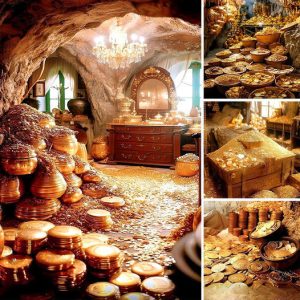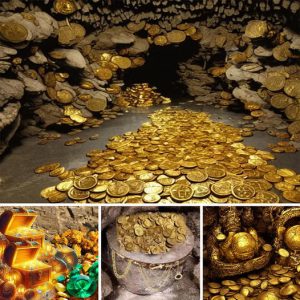River Riches: Simple Indicators of Gold and Diamond Presence

Exploring rivers for hidden treasures like gold and diamonds can be an exciting and rewarding adventure. For centuries, prospectors have braved the wilds, hoping to strike it rich by uncovering these precious minerals. While it might seem like a daunting task, there are several simple indicators that can help you determine if a riverbed might contain gold or diamonds. Here’s what to look for when you’re out in nature’s treasure troves.
Understanding Gold Deposits

Gold in rivers often comes from eroded gold-bearing rocks upstream. Over time, the heavy gold particles settle in specific areas due to their density. Here are the key indicators to look for:
1. **Black Sand Concentrations**: One of the most reliable signs of gold is the presence of black sand. Black sand is made up of heavy minerals like magnetite and hematite, which tend to settle in the same areas as gold. If you find black sand in a riverbed, there’s a good chance that gold particles might be nearby.
2. **Bedrock and Crevices**: Gold particles often get trapped in the cracks and crevices of bedrock. Look for exposed bedrock in the river, especially areas where water flow slows down, causing gold to settle. Pay special attention to crevices, cracks, and depressions in the bedrock.
3. **Natural Placer Deposits**: Placer deposits are areas where gold has naturally accumulated over time. These are usually found in the inside bends of rivers, behind large boulders, or in areas where the current slows down. Look for gravel bars or sandbanks in these locations.
4. **Rusty Rocks and Quartz Veins**: Gold is often found in association with quartz veins and iron-stained (rusty) rocks. If you spot quartz veins in the riverbed or rusty-colored rocks, it could be a sign that gold is present.
Identifying Diamond Indicators

Diamonds are typically found in regions with kimberlite pipes, which are volcanic formations that carry diamonds from deep within the Earth to the surface. Here are some signs to look for:
1. **Kimberlite Indicators**: While kimberlite pipes themselves are not common in rivers, the presence of certain minerals associated with kimberlite can be an indicator. Look for garnet, olivine, and ilmenite in the riverbed. These minerals are often found in the same areas as diamonds.
2. **Rounded Pebbles**: Diamonds are usually found in regions with rounded, well-worn pebbles. If you come across areas with a lot of rounded pebbles and cobbles, it could be worth investigating further for diamond potential.
3. **Heavy Mineral Concentrations**: Similar to gold, diamonds can also be found in heavy mineral concentrations. Check areas where heavy minerals like magnetite and garnet accumulate, as these could be potential diamond traps.
4. **Unusual Rock Formations**: Keep an eye out for unusual rock formations that might suggest the presence of kimberlite. Blue-tinged rocks or rocks with a blue-green hue could indicate the presence of kimberlite and potentially diamonds.
Practical Tips for Prospecting

1. **Use the Right Tools**: Bring along a gold pan, shovel, and sieve to help you sift through river sediments effectively. A small pickaxe can also be useful for breaking up rocks and accessing crevices.
2. **Sample Different Areas**: Don’t put all your efforts into one spot. Take samples from different areas of the river, especially where water flow changes speed, such as bends, behind boulders, and in gravel bars.
3. **Stay Safe**: Always prioritize safety. Be aware of your surroundings, especially in remote areas. Wear appropriate gear, including sturdy boots, gloves, and a hat. Always let someone know your whereabouts and expected return time.
4. **Respect the Environment**: While prospecting, be mindful of the environment. Avoid causing unnecessary disruption to the riverbed and surrounding areas. Follow local regulations and obtain any necessary permits.
Exploring rivers for gold and diamonds can be a thrilling and educational experience. By understanding and recognizing these simple indicators, you can increase your chances of finding these precious treasures. Whether you strike it rich or simply enjoy the adventure, the journey itself is a reward. Happy prospecting!





